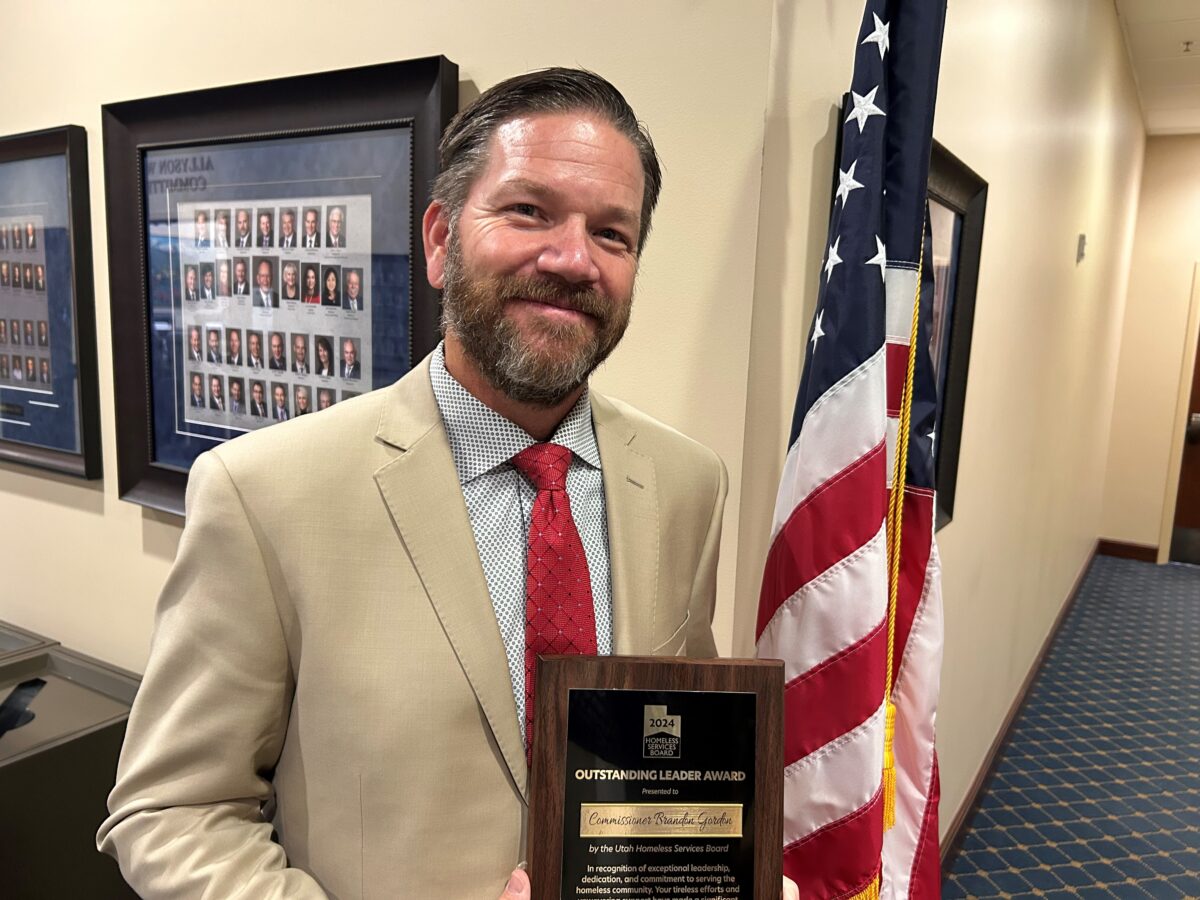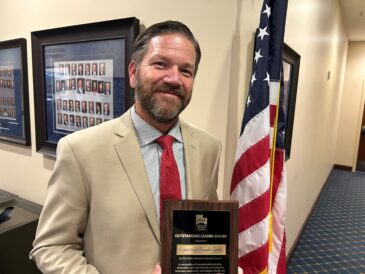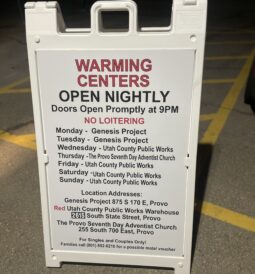County Commission Chair Brandon Gordon receives state award for warming center efforts; Utah County rolls out year two winter homeless services plan
- Utah County Commissioner Chair Brandon Gordon poses with his award from the Utah Homeless Services Board on Thursday, Sept. 25, 2025, in Salt Lake City.
- A sign outside of the Utah County Red Building lists the three sites for Utah County’s warming centers Friday, Jan. 17, 2025.
Utah County’s warming centers program started in Provo last year to comply with the state’s new requirement that counties accommodate unsheltered individuals during extreme cold weather.
The inaugural program served 675 individuals during the 2024-2025 winter and was considered a success by the Utah Homeless Service Board, which awarded County Commission Chair Brandon Gordon with the Outstanding Community Leadership Award Thursday for his role in launching it.
Gordon was lauded in the Utah Homeless Service Board meeting Thursday for how he first stepped up to create the warming centers last year.
Provo Deputy Mayor Isaac Paxman told the board that after the task force visited the potential shelter facilities, it was still short four nights, until Gordon proposed the county warehouse.
“It was a bold decision, and it took a lot of money — money from his organization, the county,” Paxman said. “It took creativity, and it took a team, mostly his team — the county — who inspected and planned and put up drywall and ultimately transformed an existing space into a warming center.”
Gordon also used the meeting to announce the county’s plans for the warming center program’s second year, which include modifications intended to streamline the program.
There will be a single warming shelter location, at the Utah County Public Works Red Warehouse in south Provo, that will open its doors from Nov. 17 to March 3, 2026. Last year, the warming shelter rotated between three Provo locations.
There will also be a consistent law enforcement presence at the shelter, and all guests will go through a metal detector and have their bags screened.
“The decision was made to simplify the model to avoid confusion from the clients and the people that utilize the centers,” county spokesperson Richard Piatt said. “And I think that, quite frankly, there were some security concerns at some of the sites and the neighbors were worried about it.”
The shelter will also be open for a shorter period of time than last year, when it ran from Oct. 15 to April 30.
Piatt said removing some lower-demand dates will give the county the ability to provide improved services during the higher demand months of the year.
“It may sound like fewer days means less service, but we feel like, in fact, we’re providing better service, because we’re able to respond to the needs of the unsheltered community when it really counts,” he said.
Those improved services will include providing people access to job training, employment support, detox and sobriety programs, mental health care and housing placement services.
Piatt said the county will look closely at how the new plan goes, and it may continue to evolve.
“We’re all kind of figuring this out together as a community, because it is a community problem, and we’re responding to it as a community,” he said.






